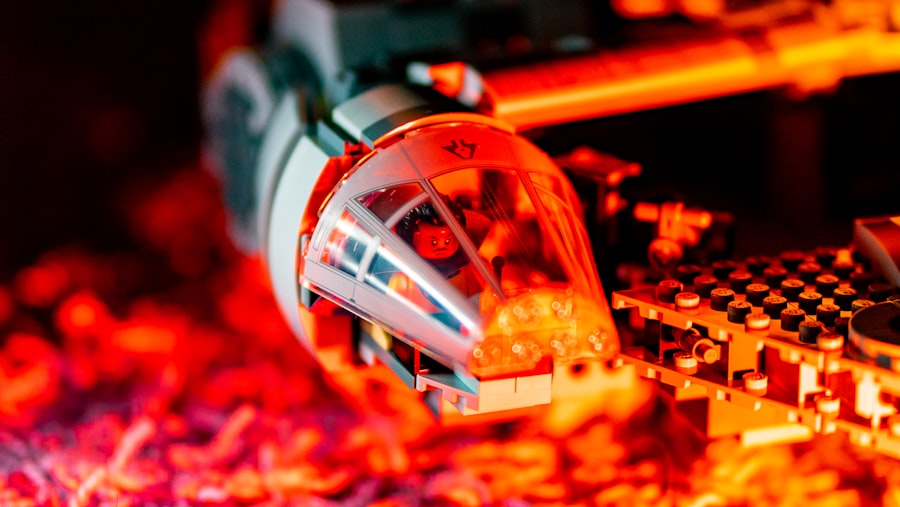The advent of autonomous delivery robots marks a significant milestone in the evolution of logistics and last-mile delivery services. These robots, equipped with advanced technology, are designed to transport goods from one location to another without human intervention. Their emergence is driven by the increasing demand for efficient, fast, and contactless delivery solutions, particularly in urban environments where traditional delivery methods face challenges such as traffic congestion and limited parking.
Companies like Starship Technologies and Amazon have pioneered the development of these robots, showcasing their potential to revolutionize the way goods are delivered to consumers. Autonomous delivery robots operate on a variety of platforms, ranging from small wheeled units to larger drones. They are typically equipped with sensors, cameras, and artificial intelligence (AI) algorithms that enable them to navigate complex environments.
The integration of these technologies allows them to perform tasks that were once thought to be the exclusive domain of human couriers. As e-commerce continues to grow, the role of these robots is expected to expand, offering a glimpse into a future where deliveries are not only faster but also more sustainable and cost-effective.
Key Takeaways
- Autonomous delivery robots are revolutionizing the delivery industry by offering efficient and cost-effective solutions for last-mile delivery.
- Navigation and mapping technology enables robots to autonomously plan and navigate their routes, ensuring accurate and timely deliveries.
- Obstacle detection and avoidance systems allow robots to safely maneuver through various environments and avoid collisions with objects and pedestrians.
- Autonomous delivery robots have varying payload capacities and can handle a wide range of delivery processes, from small packages to groceries and meals.
- Communication and interaction with humans are essential features of autonomous delivery robots, ensuring smooth delivery processes and customer satisfaction.
Navigation and Mapping Technology
At the heart of autonomous delivery robots lies sophisticated navigation and mapping technology. These systems utilize a combination of GPS, LiDAR (Light Detection and Ranging), and computer vision to create detailed maps of their surroundings. GPS provides a general location, while LiDAR generates high-resolution 3D maps that help the robot understand its environment in real-time.
This multi-faceted approach allows the robots to navigate through complex urban landscapes, identifying paths that are both efficient and safe. Moreover, the mapping technology is continually updated through machine learning algorithms that learn from previous deliveries. For instance, if a robot encounters an obstacle or a new construction site, it can adjust its map accordingly for future trips.
This adaptability is crucial in urban settings where conditions can change rapidly. The ability to recognize landmarks and understand spatial relationships enhances the robot’s navigation capabilities, allowing it to make informed decisions about the best routes to take while avoiding potential hazards.
Obstacle Detection and Avoidance
Obstacle detection and avoidance are critical components of autonomous delivery robots, ensuring they can operate safely in dynamic environments. These robots are equipped with an array of sensors, including cameras, ultrasonic sensors, and infrared sensors, which work together to detect obstacles in their path. For example, cameras can identify pedestrians, cyclists, and other vehicles, while ultrasonic sensors can measure distances to nearby objects.
This multi-sensor approach provides a comprehensive understanding of the robot’s surroundings. When an obstacle is detected, the robot’s onboard AI system processes the information in real-time to determine the best course of action. This may involve stopping, rerouting, or even navigating around the obstacle.
For instance, if a robot encounters a group of pedestrians crossing its path, it will halt until the area is clear before proceeding. This capability not only enhances safety but also builds trust with users who may be apprehensive about interacting with autonomous technology in public spaces.
Payload Capacity and Delivery Process
The payload capacity of autonomous delivery robots varies significantly depending on their design and intended use. Most consumer-oriented models can carry packages weighing up to 20 pounds, making them suitable for delivering groceries, takeout meals, or small parcels. For example, Starship Technologies’ robots are designed to carry up to 20 pounds and can navigate sidewalks and pedestrian areas efficiently.
This capacity aligns well with the growing trend of online shopping and food delivery services. The delivery process itself is streamlined and user-friendly. Customers typically place an order through a mobile app that integrates with the delivery service.
Once the order is ready for dispatch, the robot is assigned a route based on real-time traffic data and customer location. Upon arrival at the destination, the robot communicates with the customer via the app, providing instructions on how to retrieve their package. This seamless integration of technology not only enhances user experience but also reduces operational costs for businesses by minimizing the need for human couriers.
Communication and Interaction with Humans
Effective communication between autonomous delivery robots and humans is essential for successful interactions in public spaces. These robots are often equipped with screens or lights that convey information about their status and intentions. For instance, a robot may display a message indicating that it is on its way to deliver a package or signal when it has arrived at its destination.
This visual communication helps alleviate any confusion for pedestrians or other road users who may encounter the robot. In addition to visual cues, some robots utilize voice prompts or sounds to alert nearby individuals of their presence. This auditory feedback can be particularly useful in crowded environments where visual signals may be overlooked.
Furthermore, many delivery robots are designed with user-friendly interfaces that allow customers to interact directly with them through mobile applications. This interaction can include tracking the robot’s location in real-time or providing feedback on the delivery experience, fostering a sense of engagement between users and technology.
Safety Features and Regulations
Safety is paramount in the deployment of autonomous delivery robots, necessitating robust features and adherence to regulations. Many robots are equipped with emergency stop buttons that can be activated by pedestrians or operators in case of an emergency. Additionally, they often feature redundant systems that ensure continued operation even if one component fails.
For example, if a robot’s primary navigation system encounters an issue, it can switch to backup sensors to maintain safe operation. Regulatory frameworks governing the use of autonomous delivery robots vary by region but generally focus on ensuring public safety while promoting innovation. In some cities, specific zones have been designated for robot operation, while others have implemented speed limits or restrictions on pedestrian areas.
Compliance with these regulations is crucial for companies looking to deploy their robots widely. As these technologies evolve, ongoing dialogue between manufacturers, regulators, and communities will be essential in shaping policies that balance safety with technological advancement.
Battery Life and Charging Stations
Battery life is a critical consideration for autonomous delivery robots as it directly impacts their operational efficiency and range. Most robots are designed to complete multiple deliveries on a single charge; however, factors such as payload weight and environmental conditions can influence battery performance. Typically, these robots utilize lithium-ion batteries due to their high energy density and relatively low weight, allowing for longer operational periods between charges.
To address battery life challenges, companies are investing in strategically placed charging stations throughout urban areas. These stations can be located near high-traffic zones or popular delivery destinations to facilitate quick recharging during downtime. Some robots are even designed to autonomously navigate back to charging stations when their battery levels drop below a certain threshold.
This capability not only extends their operational range but also ensures that they remain available for deliveries throughout the day.
Future Developments and Potential Impact on Delivery Industry
The future of autonomous delivery robots holds immense potential for transforming the logistics landscape significantly. As technology continues to advance, we can expect improvements in navigation systems, obstacle detection capabilities, and overall efficiency. Innovations such as enhanced AI algorithms will enable robots to learn from their experiences more effectively, allowing them to adapt to new environments and challenges seamlessly.
The impact on the delivery industry could be profound; businesses may see reduced labor costs as reliance on human couriers diminishes. Additionally, faster delivery times could become the norm as robots operate around the clock without breaks or downtime. This shift could lead to increased consumer expectations regarding delivery speed and convenience, prompting further innovation within the sector.
Moreover, as cities become more congested and environmental concerns grow, autonomous delivery robots present an eco-friendly alternative to traditional delivery methods that rely heavily on fossil fuels. By reducing vehicle emissions associated with last-mile deliveries, these robots could contribute positively to urban sustainability efforts. In conclusion, autonomous delivery robots represent a significant leap forward in logistics technology.
Their ability to navigate complex environments safely while interacting effectively with humans positions them as key players in the future of delivery services. As advancements continue in this field, we can anticipate a transformative impact on how goods are transported in urban settings.
If you’re interested in understanding the intricacies of autonomous technology, particularly in the realm of delivery robots, you might also find value in exploring how chatbots are enhancing customer interactions. A related article that delves into this topic is available on the SmartSender platform. It discusses how chatbots can be integrated seamlessly to improve customer service and engagement, which is crucial in the era of digital communication and automation. You can read more about this on




